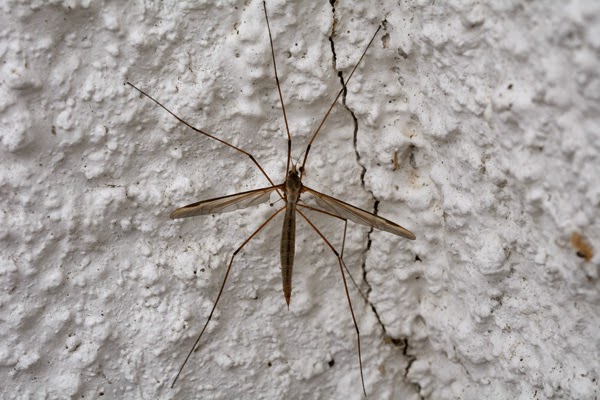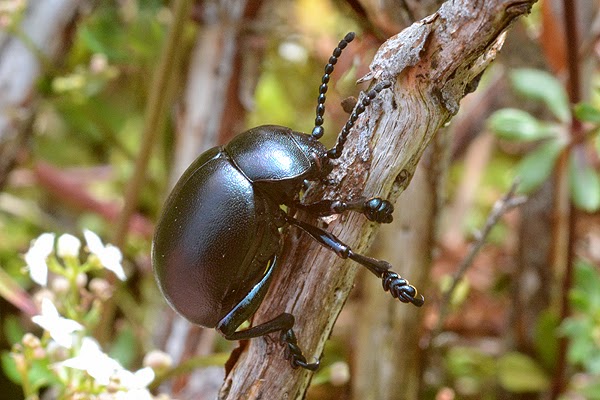 |
| Lepidozia reptans |
Saturday 20 December 2014
Lepidozia reptans
Another distinctive Liverwort under the microscope. Common name is Creeping Fingerwort.
Diplophyllum albicans
Tuesday 11 November 2014
Pleurozium schreberi
This moss I took from a wall on the Mendips. The leaves are translucent so when wet the red stems show up much more. The leaves are distinctive having a double nerve and red at the base. I noticed on some leaves there is a fold from half way to the tip that allows the leaf to hug around the stem, others looked to be naturally curved.
 |
| Pleurozium schreberi |
 |
| Pleurozium schreberi |
Saturday 1 November 2014
Ctenidium molluscum?
Friday 31 October 2014
Brean Down 30th-31st October
2 MV's and 2 actinics ran from 9pm to 3am on Brean Down recording quite a few migrants. Here is the whole list from that night:
40+ RDP
5 Feathered Thorn
10 Beaded Chestnut
1 Diamond-back Moth
1 Scarce Bordered Straw
3 Rush Veneer
10 Angle Shades
4 Red-green Carpet
1 White Point
2 Setaceous Hebrew Character
30 November Moth
2 Autumnal Moth
3 Green Brindled Crescent
2 Large Wainscot
1 Mother of Pearl
5 Lunar Underwing
1 Dark Sword-grass
1 LBAM
1 Red-line Quaker
1 Pearly Underwing
1 Shuttle-shaped Dart
3 Black Rustic
2 Turnip
1 Brick
1 Acleris rhombana
2 Blastobasis lacticolella
1 Feathered Ranunculus |
| Scarce Bordered Straw |
 |
| White Point |
Tuesday 23 September 2014
Presumed Chrysocharis pentheus
On 30th August 2014 I found leaf mines on Hemp Agrimony (Eupatorium cannabinum) that had several diptera mines resembling those caused by Liriomyza eupatorii. I took one home that was still vacated in an attempt to rear and photograph but instead found that the larva was parasitised by what appears to be Chrysocharis pentheus. Little is known about these insects and the distribution is also unclear although they are said to be found in the UK.
 |
| Presumed Chrysocharis pentheus |
 |
| Diptera mine on Hemp Agrimony |
Thursday 4 September 2014
Tipula oleracea
This is another crane fly that turned up around the moth trap this morning. Feeling confident I thought I'd have a go at ID'ing it. Again it turned out to be a tipula having 13 antennal segments, long palpi especially the last segment and vein Sc ending in R. Shown in one of the pictures below is a view of the underside of the head showing the narrowest distance between the eyes being equal to the distance of the antennae base showing it to be the species Tipula oleracea. On other tipula's this distance is much greater.
 |
| Tipula oleracea |
 |
| Tipula oleracea |
Wednesday 3 September 2014
Large Black Slug Arion ater
An overlooked or omitted addition to my mollusc list this species was frequently encountered on the Mendips last night.
 |
| Arion ater |
Wednesday 27 August 2014
Tipula lateralis
Tipula lateralis is a common crane fly but how many of us have taken the time to identify one down to species level eliminating all other candidates? I was faced with one in the moth trap this morning and set about confirming it's identity. The first step is to confirm the tipulinae group: This can be confirmed by wing vein Sc ending in R, long palpi, spurs on tibiae and 13 segments on the antennae. Tipula's are then confirmed by wing venation and body markings.
 |
| Tipula lateralis |
 |
| Tipula lateralis |
 |
| Tipula lateralis |
 |
| Tipula lateralis |
Saturday 16 August 2014
Tachina grossa
Very impressed with this diptera. I thought it was a chafer at first but it turned out to be Tachina grossa
 |
| Tachina grossa |
Sunday 10 August 2014
Volucella zonaria
My first was in the garden which managed to escape a photo call after being trapped in the garden shed but yesterday I found another in a nearby park.
 |
| Volucella zonaria |
Ctenophora ornata
This impressive crane fly was found in several moth traps in the New Forest in July.
 |
| Ctenophora ornata |
Dark Giant Horsefly Tabanus sudeticus
This huge diptera flew into the moth trap one night whilst trapping in Somerset. Looks very like Dark Giant Horsefly Tabanus sudeticus.
 |
| Dark Giant Horsefly Tabanus sudeticus |
Wednesday 6 August 2014
Small Red Damselfly
Thursday 10 July 2014
Common Fumitory
Not had this confirmed yet but looks a close match to Common Fumitory. I found it on the side of the road whilst broken down test riding a potential new motorcycle.
 |
| Common Fumitory |
Tuesday 8 July 2014
Coleophora peribenanderi
A new moth trapped in the garden on 6th July 2014 confirmed today as Coleophora peribenanderi. This moth is said to use Thistle (carduum or cirsium) as the host plant.
 |
| Coleophora peribenanderi |
 |
| Coleophora peribenanderi male genitalia plate |
Monday 7 July 2014
Essex Skipper
Coleophora limosipennella
Whilst in the woods this morning I found this larval case on Elm which looks good for Coleophora limosipennella.
 |
| Coleophora limosipennella larval case on Elm |
Tuesday 1 July 2014
Green Tiger Beetle
I've seen Green Tiger Beetle on Brean Down a few years ago but never on Sand Point until today. I found this individual on the footpath near the point seemingly hunting for food. Their prey is said to be ants and spiders and other insects small enough to drag down into it's burrow. I watched it attack a woodlouse at one stage the rest of the time it lay in wait.
 |
| Green Tiger Beetle |
Sunday 29 June 2014
Bloody-nosed Beetle
Whilst out on Black Down on the Mendips this morning I found this beetle. After some trouble I eventually got identified as Bloody-nosed Beetle. A common beetle that is found in the vicinity of Bedstraws. Whilst out there were plenty of Common Heath and Bilberry Tortrix were on the wing.
 |
| Bloody-nosed Beetle |
Saturday 28 June 2014
Lobesia littoralis
I found this little moth at the end of Sand Point on 27th June which turned out to be Lobesia littoralis. This species can be found in the vicinity of Thrift which is present on Sand Point. The last record for the site was some 13 years ago.
 |
| Lobesia littoralis |
Sunday 15 June 2014
Mendip mothing
Another good trapping session on the Mendip Hills on Friday 13th including 3 new macro's:
 |
| Map-winged Swift |
 |
| Neofaculta ericetella |
Denticulate Leatherbug
Found this little fella on the patch today. One of the squash bugs that feed on Black Meddick a Denticulate leatherbug Coriomeris denticulatus
 |
| Denticulate leatherbug Coriomeris denticulatus |
Friday 6 June 2014
Narrow-bordered Bee Hawk-moth
A big surprise to find Narrow-bordered Bee Hawk-moth on the patch this morning 6th June. It's never been recorded before. The larval foodplant is Devil's-bit Scabious and Field Scabious but I've only found Small Scabious. It was nectaring on Red Valerian and was quite approachable to around 5 feet.
 |
| Narrow-bordered Bee Hawk-moth |
 |
| Narrow-bordered Bee Hawk-moth |
 |
| Narrow-bordered Bee Hawk-moth |
 |
| Narrow-bordered Bee Hawk-moth |
Saturday 31 May 2014
Dioctria rufipes
It took a little while to figure out the ID of this. Clinched in the end by looking through my collection of photos from last year.
 |
| Dioctria rufipes |
Friday 30 May 2014
Crepidodera aurea 30th May 2014
I found this beetle on the bark of White Poplar this morning at Sand Point, Somerset so decided to have a go at identifying it. The conclusion was Crepidodera aurea. The dark hind femur contrasting with the orange tarsus and tibia was the clue that led to it being Crepidodera species.
 |
| Crepidodera aurea |
Wednesday 28 May 2014
Spurge Hawk-moth
Just purchased some Spurge Hawk-moth pupae from the internet two of which emerged today. I'm never likely to see this species in the wild hence the reason for the purchase.
 |
| Spurge Hawk-moth |
 |
| Spurge Hawk-moth |
Eulophidae sp
Out in the garden this morning I came across this little insect on a bramble leaf. Intrigued by it's branched antennae I investigated further and concluded that it may be one of the Eulophidae.
Tuesday 27 May 2014
Solieria sp. pacifica?
After some trouble this diptera eventually got narrowed down to a Solieria sp. The most likely is the Solieria pacifica.
Looking at "Tachinid Flies" by Robert Belshaw it would seem that these flies are indistinguishable as females and with difficulty in the males. S.pacifica is separated by facial bristles and tarsal claws. I think this is a female so ID perhaps not achievable.
Looking at "Tachinid Flies" by Robert Belshaw it would seem that these flies are indistinguishable as females and with difficulty in the males. S.pacifica is separated by facial bristles and tarsal claws. I think this is a female so ID perhaps not achievable.
 |
| Solieria pacifica? |
 |
| Solieria pacifica? |
Didea fasciata
A new hoverfly Didea fasciata found in the garden on 26th May. There was also a Baccha elongata but sadly I didn't have my camera with me.
 |
| Didea fasciata |
Amblyteles armatorius?
Ichneumon wasps are notorious for being difficult to identify but this one does look a dead ringer for Amblyteles armatorius. Found patrolling the garden yesterday it was still present today so I netted it, cooled it down ready for a photo shoot.
 |
| Amblyteles armatorius? |
 |
| Amblyteles armatorius? |
Subscribe to:
Posts (Atom)








